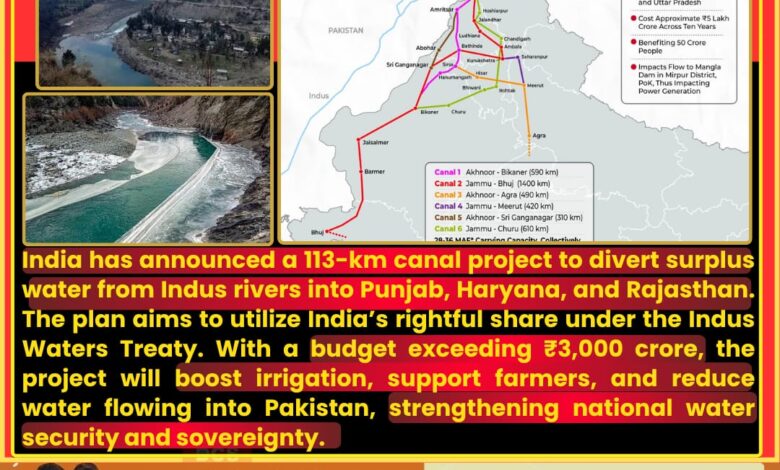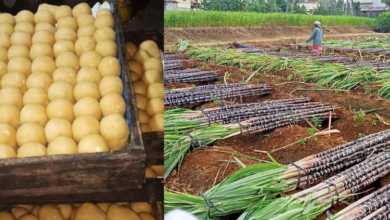
 India’s Strategic Indus Water Move: New Canal to Aid Northern States
India’s Strategic Indus Water Move: New Canal to Aid Northern States
In a major shift in water resource management, India has launched plans for a 113-kilometre canal to utilize surplus Indus water allocated under the Indus Waters Treaty. The initiative is set to benefit the water-deficit states of Punjab, Haryana, and Rajasthan by redirecting unutilized flows from India’s share of Indus basin rivers.
 Utilizing India’s Share Under Indus Treaty
Utilizing India’s Share Under Indus Treaty
The Indus Waters Treaty (1960) allows India unrestricted use of eastern rivers — Ravi, Beas, and Sutlej. However, much of this water flows untapped into Pakistan due to lack of infrastructure. The new canal project aims to plug these losses and make efficient use of the country’s rightful water share.
 113-km Canal to Enhance Irrigation and Water Access
113-km Canal to Enhance Irrigation and Water Access
The proposed 113-kilometre canal will draw surplus water from the Ujh Multipurpose Project and channel it toward irrigation systems across the three states. The canal will improve water availability for over 1.5 million farmers and support agriculture in semi-arid regions.
 Punjab, Haryana & Rajasthan to Benefit
Punjab, Haryana & Rajasthan to Benefit
-
Punjab will receive enhanced water for key crops such as wheat and rice.
-
Haryana, often hit by summer droughts, will get crucial irrigation support.
-
Rajasthan’s border districts will see agricultural revival due to improved water access.
 Boost to Food Security and Water Sovereignty
Boost to Food Security and Water Sovereignty
By making use of its share of Indus water, India is not only reducing reliance on monsoons but also strengthening food security. This strategic move could significantly decrease water wastage and reduce the flow of unutilized water to Pakistan, reinforcing national interests.
 Government Officials Applaud the Initiative
Government Officials Applaud the Initiative
A senior water resource official noted:
“This canal is a milestone in India’s journey toward water self-sufficiency. It’s not just engineering — it’s a strategic response to decades of underutilized water resources.”
 Project Timeline and Budget
Project Timeline and Budget
The budget for the canal construction is projected to be over ₹3,000 crore, with groundwork expected to begin in early 2026. The canal is part of a larger mission to maximize water usage efficiency in northern India.










